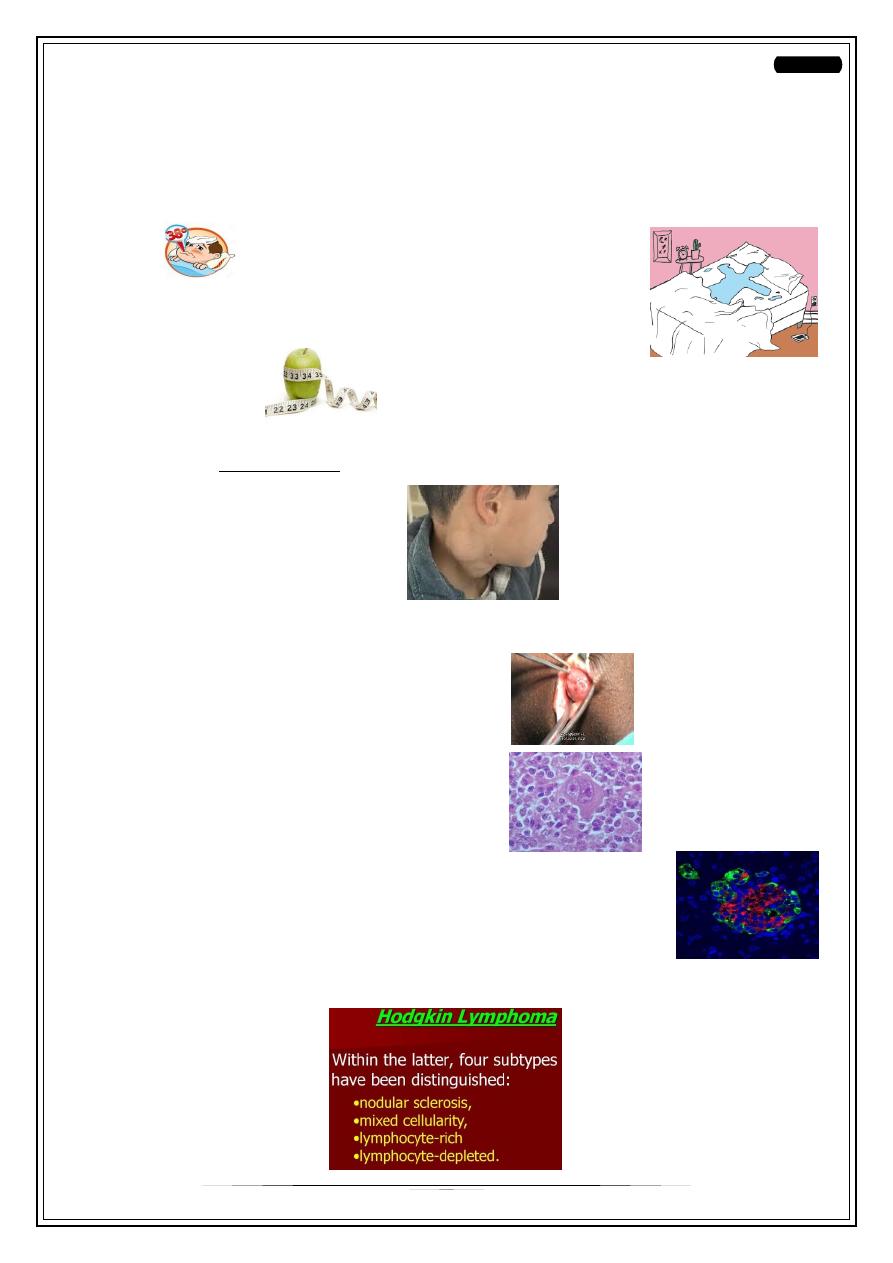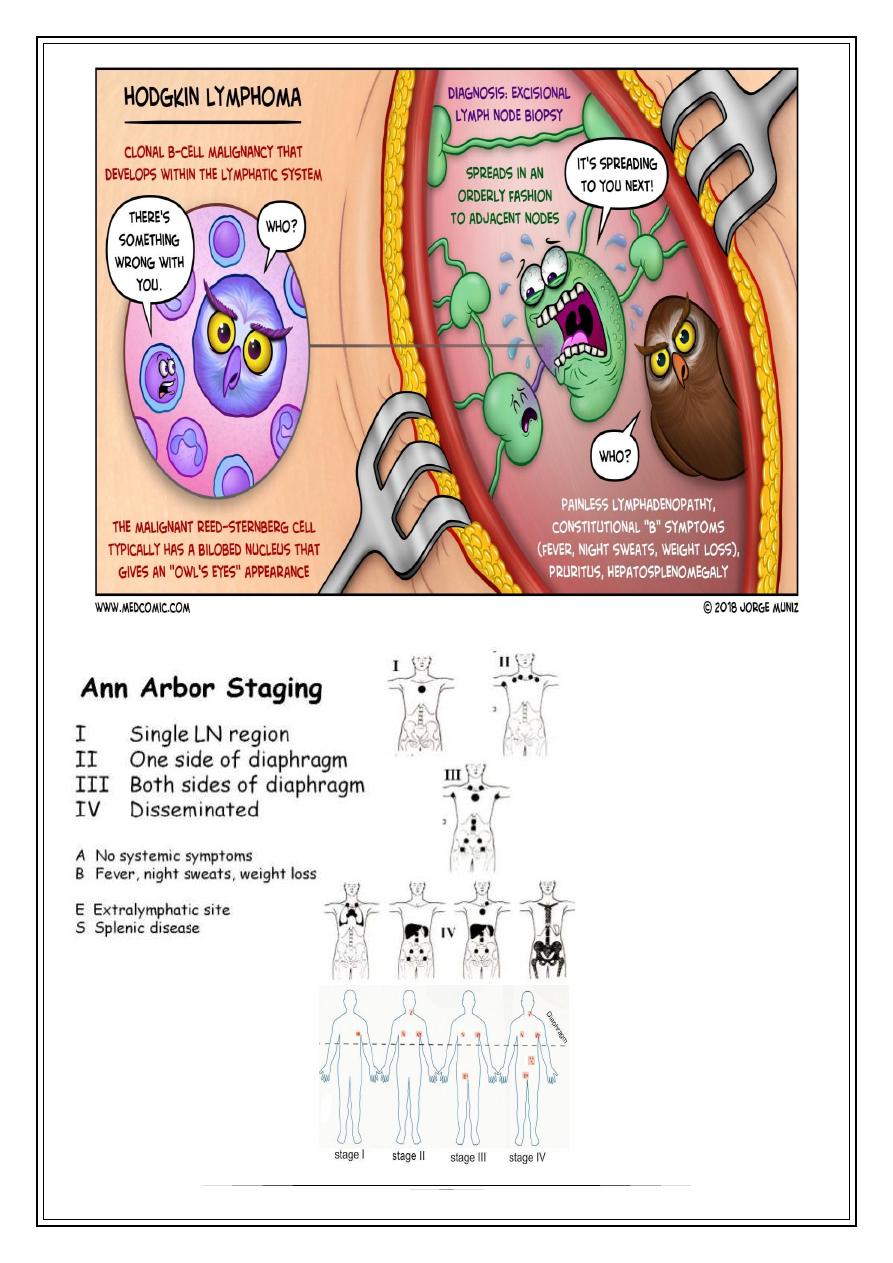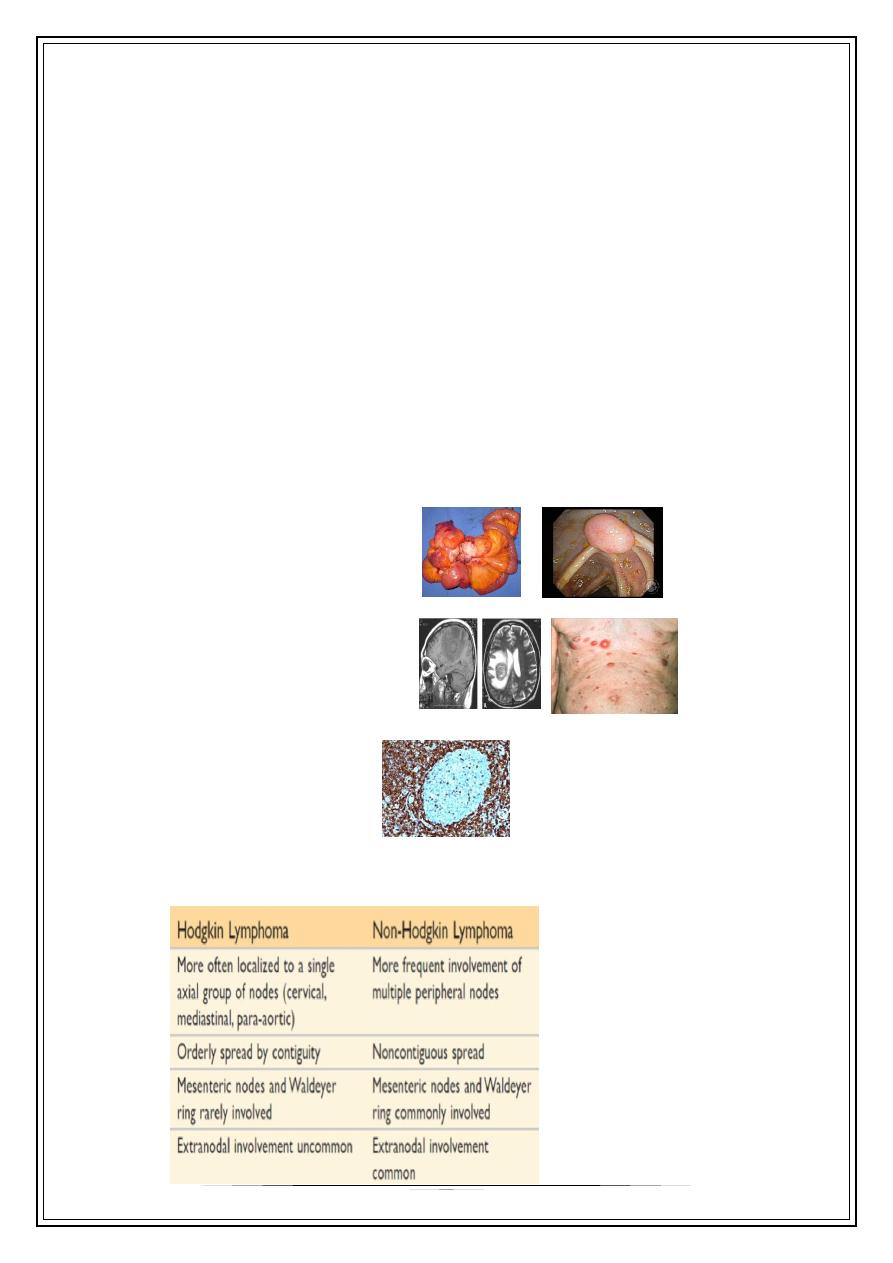
Fifth Stage
Internal Medicine
Dr. Aamer – Lecture 7
1
Lymphoma's
Case 1
Young age patient, presented with:
•
Fever
•
Drenching sweating (sweating that needs changing internal
clothes).
It is one of the hard symptoms
.
•
Weight loss
This triad is called B symptoms
Next? Examination:
•
Cervical lymph nodes enlarged
Next? Investigations
•
CBC and blood film: Normal
•
Chest X-ray: normal (no TB)
•
Lymph node excisional biopsy:
o
Reed–Sternberg cells (Owl eyes).
This is the special cell of Hodgkin lymphoma
•
Immunohistochemistry: to assess clonality of biopsy (
in blood we
assess clonality by flow cytometry, but this is solid tissue
)
o
We found (CD-15, CD-30), markers of lymphoma.
So, the diagnosis is
Hodgkin Lymphoma
!

2
Staging ;

3
Management
•
Chemotherapy: ABVD regimen
•
Treatment response is assessed clinically and by repeat CT and newer scanning
modalities such as positron emission tomography (PET).
•
ABVD chemotherapy can cause cardiac and pulmonary toxicity, due to doxorubicin
and bleomycin, respectively
Prognosis
•
Over 90% of patients with early-stage HL achieve complete remission
•
Between 50 and 70% of those with advanced-stage HL can be cured
(Other cured cancers are APL (M3), ALL in pediatric)
-------------------------------------------------
Case 2
Old age male, with:
•
Same as the mentioned B symptoms
•
Enlarged lymph node in the neck
And, atypical sites also involved (i.e. Skippy and attacking non-nodal tissues), like:
•
Intestine -> Intestinal obstruction
•
Rectum -> Rectal bleeding
•
Brain -> Masses in brain
•
Skin lesions.
On excisional biopsy:
•
No `Owl` cells
•
Immunohistochemistry:
Stained with special CD markers
So, this is a case of
Non-Hodgkin lymphoma
!
In Compare:

4
NHL has hematogenous spread network (distant `Skippy` sites).
Intrathecal methotrexate is used for CNS prophylaxis in non-Hodgkin lymphoma.
Treatment
Chemotherapy: R-CHOP
Radiotherapy maybe, but there is no rule for surgery.
Prognosis
Poor prognosis, because usually presented in old age with disseminated disease.
There is possibility of remission in 40%.
For further info, read the text book `Davidson`
Thank you,,,
Some Notes were written from students…
